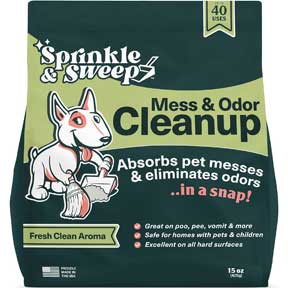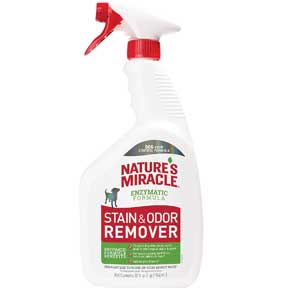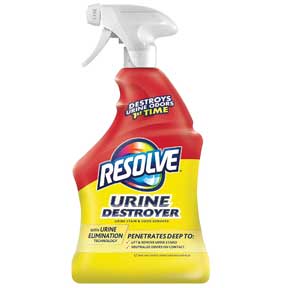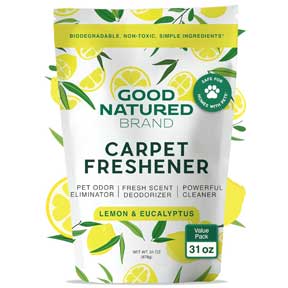Pet Urine Stain Removal from Floors
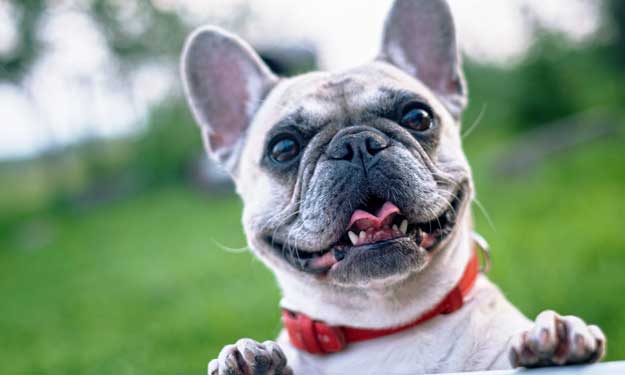
Guaranteed Pet Stain and Odor Removal Methods.
The Best Guaranteed Way to Remove Pet Stains and Odor
Pet urine stain removal from floors is almost always something that all pet owners need to deal with at one time or another and some of us have to deal with it more often than others. Whether it’s coming from our fun loving pup or a lazy cat, they just happen! Yikes.
Pet stains are not fun stains to deal with. They can be rather easy to handle if you know what to do and have the products that you need to clean up those stains on hand. If you do that, then the stain has no chance of actually becoming a stain.
How to Remove Pet Stains and Odor Completely
When you have a pet, you know that you have to watch him or her and tend to their needs. What you do not know is that you may also need to have an arsenal of tools to aid you in the removal of pet stains.
This is very necessary and it can be the difference of a stain setting and one that does not. Here are some things you should keep at hand to handle your pet stains.
Cleaning Supplies
- Clean, dry terry cloths for blotting (immediately if possible)
- White vinegar
- Sponges
- Mild detergent
- A spray bottle for the solution application
- Baking soda
Never Use Ammonia to Clean Pet Stains
Do not use ammonia based products on your pet stains. This will only cause the animal to want to urinate there again because, to him, it smells like urine.
This is a natural reaction to the scent. On top of that, if you have a stain on your carpeting, you need to fully clean it up so that the dog or cat does not urinate in that spot again. Where he smells urine, he will want to go again.
Work on the Stain and Clean it Clean Quickly
In order to remove pet stain, you need to react quickly to it.
The biological components in the stain will work quickly to cause discoloration and odor. The longer this is left on the carpet or flooring, the harder it will be for you to get the stain out fully. Quick work is in order.
Cleaning Pet Urine Stains from Carpets
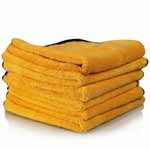 There are many things that you can do wrong that may cause that stain to set in your carpeting. Therefore, it is essential for you to get to the stain as quickly as possible and to do it the right away.
There are many things that you can do wrong that may cause that stain to set in your carpeting. Therefore, it is essential for you to get to the stain as quickly as possible and to do it the right away.
Avoid any trouble by soaking up as much of the urine as soon as possible. Use a few layers of paper towels or some other absorbent material and press as hard as you can to get as much liquid up as possible. Change the absorbent material as needed.
Just blot at the stain, don’t rub it around. This will cause it to spread further.
Basic Steps for Removing Fresh Urine Stains
- Use a dry terry cloth, paper towels or other absorbent material to blot the stain and to remove as much liquid possible.
- Use a solution of 50 percent water to 50 percent vinegar on the stain. Completely spray the area or pour a small amount onto the stained area.
- Blot the stain with clean absorbent material to remove the cleaning solution.
- Repeat as necessary.
- When you think you have removed all the urine stain with the cleaning solution, rinse with plain, cool water and blot again to lift up all liquid.
- Cover with a clean towel to keep the area free from debris and people stepping on it.
- Let the stained area dry completely and vacuum.
A good cleaning of the pet stain will help to remove most if not all of the odor that came along with the stain. If you find that there is still a lingering odor, apply a generous amount of baking soda and work it into the area with your fingertips. Cover and let sit overnight. Vacuum the next day.
Tough Stain Removal
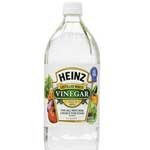 If you have removed all of the urine, the vinegar and baking soda (used separately) guarantees your animal won’t smell urine and hit the spot again. The only issue would be if the spot has been urinated on several times and has soaked in to the padding of the carpet.
If you have removed all of the urine, the vinegar and baking soda (used separately) guarantees your animal won’t smell urine and hit the spot again. The only issue would be if the spot has been urinated on several times and has soaked in to the padding of the carpet.
Another solution to try is the same one that is used to remove skunk spray. (I’ve listed it directly below) It works by a short lived chemical reaction generated by combining baking soda and medicinal strength (3 percent) hydrogen peroxide. It’s safe on you, your pets, your clothing, furniture and belongings.
My Super Strength Deodorizer for Pets, Clothes, Carpets and Upholstery
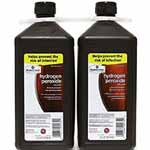 This cleaning solution is used to remove skunk spray from everything. The cleaning solution loses effectiveness almost immediately, so it cannot be stored. You will need to make a fresh batch whenever you need to use it again.
This cleaning solution is used to remove skunk spray from everything. The cleaning solution loses effectiveness almost immediately, so it cannot be stored. You will need to make a fresh batch whenever you need to use it again.
Most people have baking soda and hydrogen peroxide in their cupboards, so I’m guessing this wont be an issue. If you have dark or delicate carpets you should test this method in an inconspicuous place first.
Super Strength Deodorizing Cleaner
 If you have just a small area to deodorize, you can cut this recipe into fourths to clean the urine stain.
If you have just a small area to deodorize, you can cut this recipe into fourths to clean the urine stain.
The Chemical Reaction between the baking soda and hydrogen peroxide is over quickly, remove it completely from the carpet within 5 or 10 minutes by using paper towels or some other absorbent material.
Let dry naturally, then vacuum to restore the nap of the carpet. The carpet fibers may be a little stiff from the cleaning solution, but they’ll soften up after vacuuming.
- 1 quart of 3 percent hydrogen peroxide
- 1/4 cup of baking soda (sodium bicarbonate)
- 1 teaspoon of liquid detergent
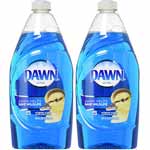 I’ve broken the recipe into fourths below just to be nice.
I’ve broken the recipe into fourths below just to be nice.
- 1 cup 3 percent hydrogen peroxide
- 1 tbsp. baking soda
- 1/4 teaspoon of liquid detergent
Removing Fresh Pet Urine Stains and Odor from Bare Floors
It’s equally important for you to take notice of bare floor messes as well. If urine is not cleaned from hardwood floors as soon as possible, it can leave dark spots where the stain occurred. Tile floors are a little easier as far as soaking up the liquid but urine can cause discoloration to grout if not cleaned as soon as you can get to it.
Soak up the Urine
For either floor type, soak up as much of the urine as you can using a few layers of paper towels. Just blot it up and try not to move the liquid around. Repeat as needed with the paper towels.
Cleaning Hardwood, Tile and Laminate Floors
For hardwood floors mix 1/4 to 1/2 cup white vinegar to 1 gallon water. Wet a clean old rag and clean the area. Rinse and wring out the cloth and repeat. No need for water to be sloshed on the floor and over wetting the area. Thoroughly dry the floor when finished.
To give the grout a little extra TLC, use an old toothbrush dipped in the vinegar/water solution and scrub the area. Thoroughly rinse the toothbrush of the vinegar, then go over the grout with plain water.
Do not use vinegar on marble or natural stone surfaces as it can permanently damage the tiles.
If you are not sure what kind of flooring you have, you may want to consider using a floor cleaning professional as some products can damage the protective coating.
Pet Stain and Odors

